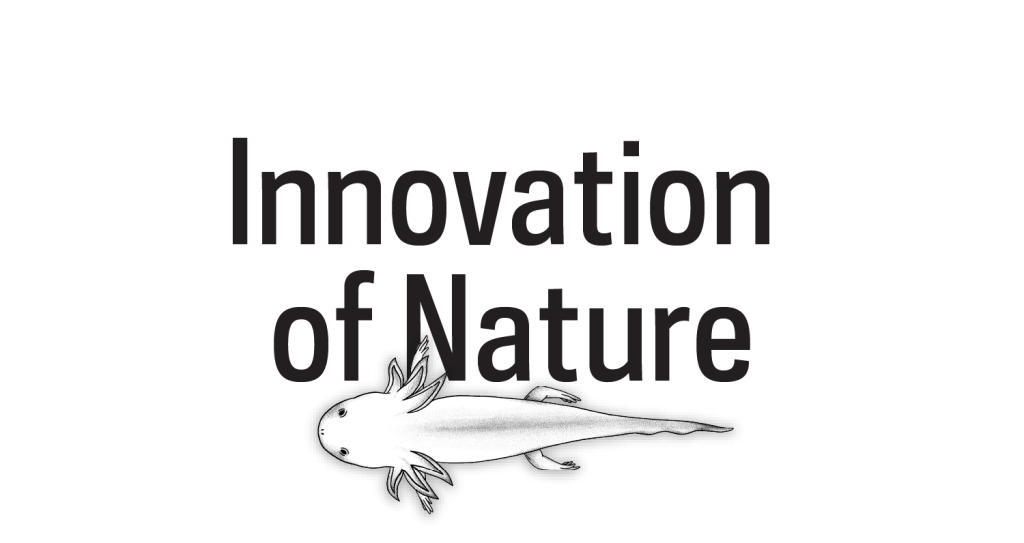
Where nature inspires new ways to heal and build.
By studying how cells grow and heal, scientists have created powerful new tools. These images show tissue scaffolds, lab-grown organs, and pollution-fighting particles. These are amazing inventions based on biology itself. Nature is our best engineer, and the future of medicine may lie in learning from it.
Try this: What natural power would you borrow to solve a problem in the world? Can you tell what part is made by humans and what part is made by nature?
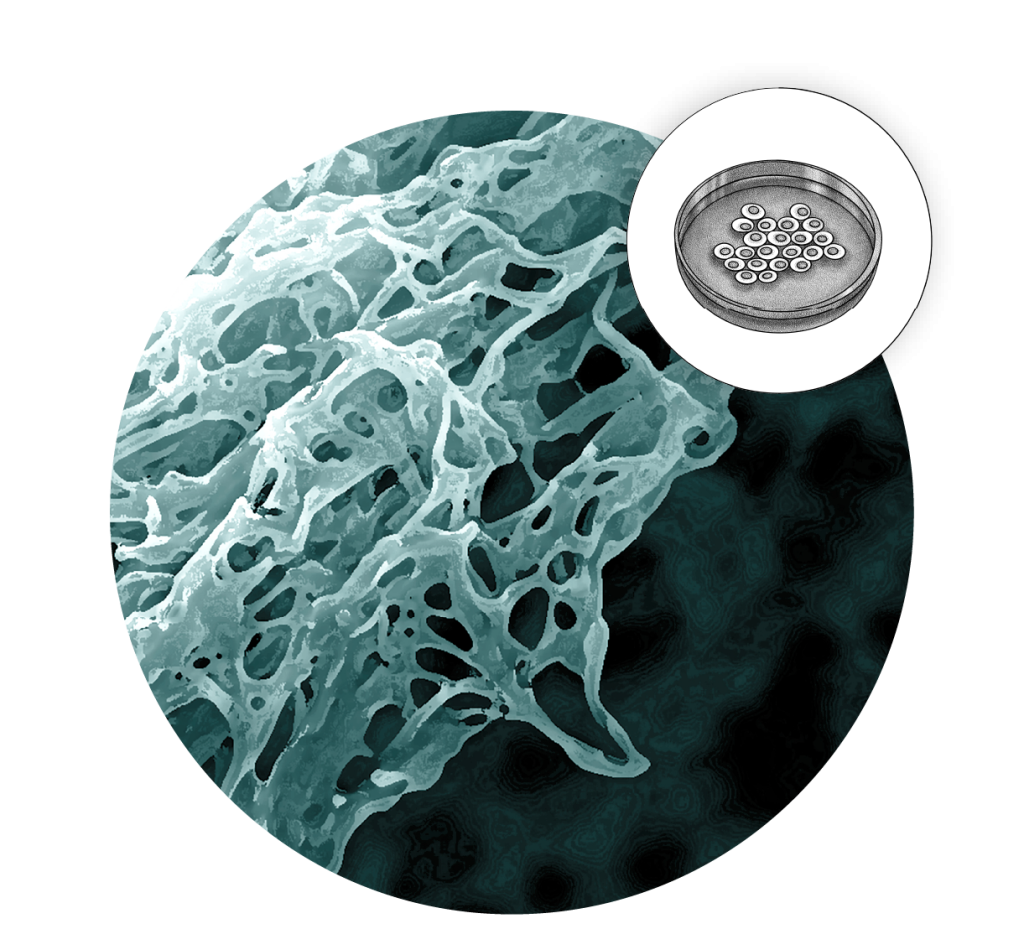
Nanoengineering: Engineered scaffold for tissue regeneration
This image, created by Seth Woodbury at the University of Michigan School of Dentistry, shows a synthetic scaffold designed to support tissue regeneration. Some tissues, like skin, can repair themselves, but others need extra help. In regenerative medicine, bioengineered scaffolds serve as a temporary framework that guides stem cells to grow, divide, and rebuild damaged tissue. The scaffold here is made from a special material that forms nanofibers during fabrication. These fine structures support cell attachment and growth, making them an ideal platform for repairing tissues that can’t heal on their own.
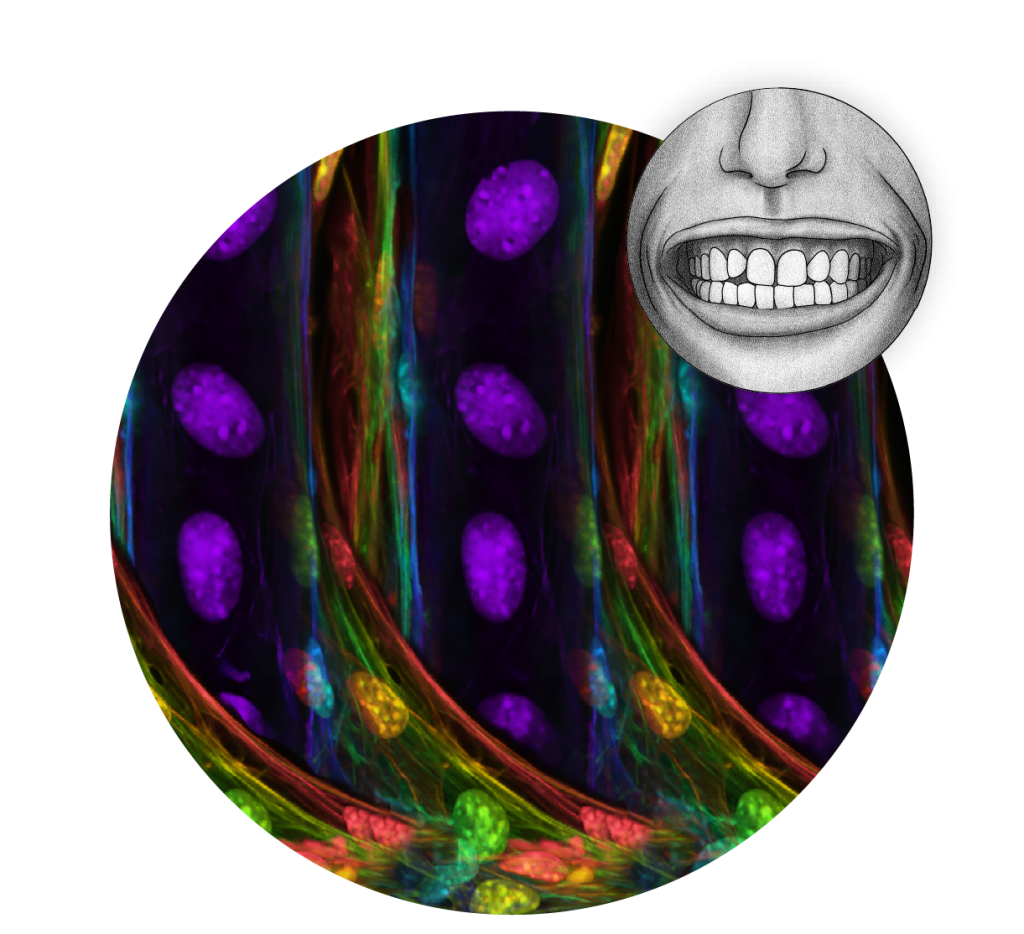
Cellular Microjewelry: Dental scaffolding with human cells to rebuild gums
Captured by Yao Yao at the University of Michigan School of Dentistry, this image shows a bioengineered scaffold used to rebuild gum tissue. In cases of periodontitis, when gums recede and expose tooth roots, this approach offers an alternative to surgical grafts. The scaffold mimics the natural 3D environment of gum tissue and is seeded with human periodontal ligament cells, which grow in ordered sheets around the fibers. Once implanted, the scaffold gradually breaks down while the cells promote regeneration, forming a living repair system that’s both functional and striking under the microscope.
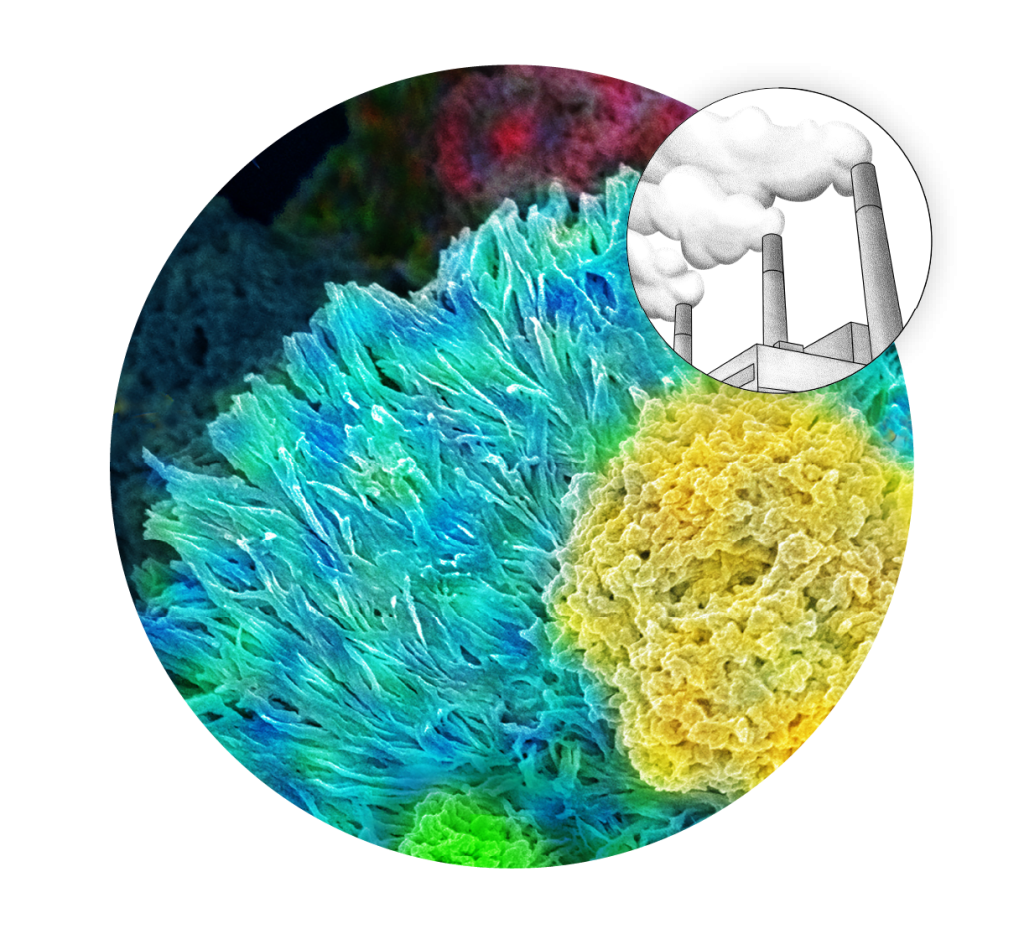
Pyrite Reef: Engineered particles for pollution degradation
This image, created by Naomi Ramesar at the University of Michigan College of Engineering, shows iron sulfide particles in the process of breaking down lignin: a tough byproduct from paper production. These engineered particles begin as fibrous structures and then self-assemble into spherical clusters, shown here at an intermediate stage. As they interact with lignin, they help convert waste into usable biofuel, offering a sustainable way to tackle industrial pollution. The image is false-colored to evoke the coral reefs of Trinidad and Tobago, connecting environmental engineering to ecological beauty.
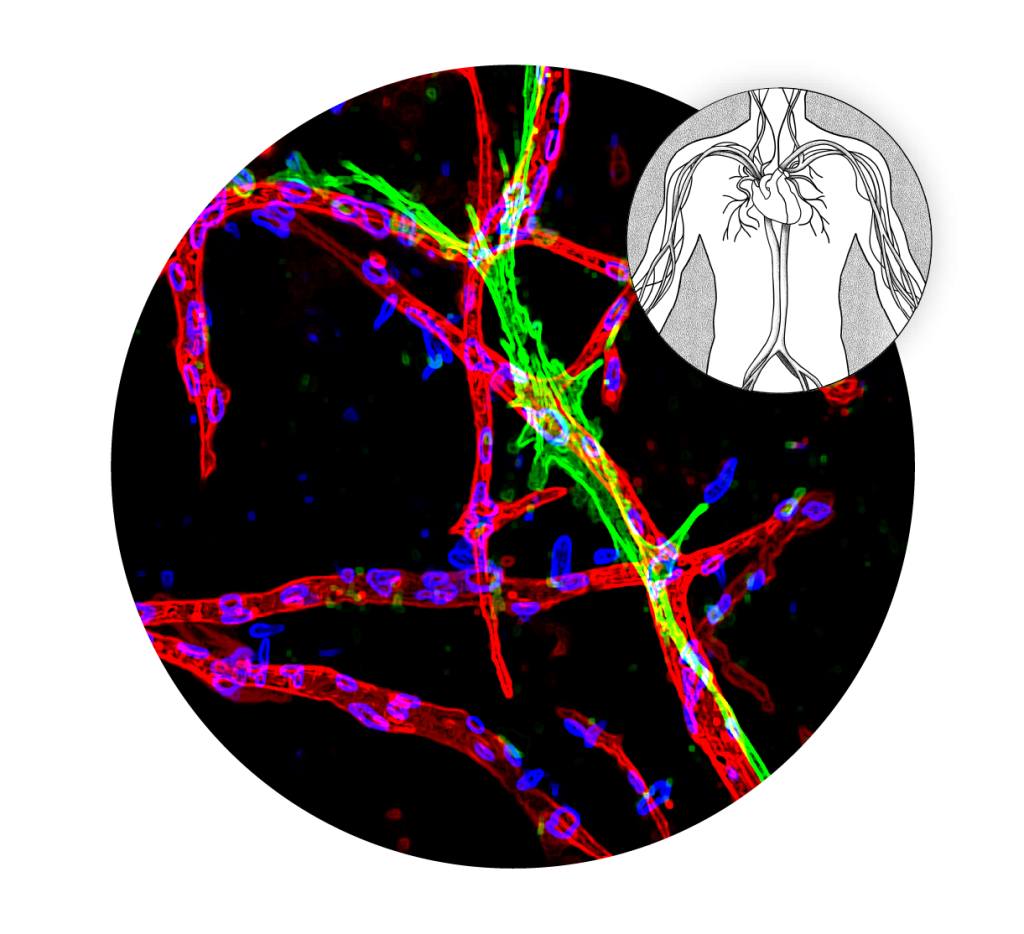
Healing Crosstalk: Organoids and engineered tissues
This image by Nicholas Schott at the University of Michigan illustrates a lab-grown tissue system designed to mimic blood vessels. A key challenge in tissue engineering is adding functional vasculature. Here, endothelial cells (which form blood vessels, shown in red) are cultured with mesenchymal stem cells (which support tissue growth, shown in green) inside a fibrin hydrogel. Over time, the cells form complex, branching vessels. The stem cells then help mature and stabilize these vessels by turning into smooth muscle, creating a dynamic interplay that supports long-term tissue health and regeneration.